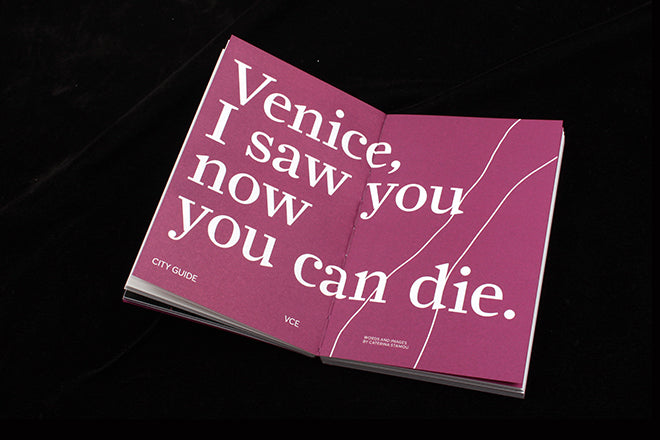
Desired Landscapes #3
With our cities becalmed by lockdown, Desired Landscapes presents an opportunity to reminisce in the pages of its third issue.
After all, the Athens-based journal ‘started out as an experimental tool to analyze and document the image of the city’. Desired Landscapes has always been more than just a guide – with its neutral purple cover, each issue is more like a small, chunky book or pocket-size diary full of musings, photographs, poems and stories born from a different set of cities.
Desired Landscapes does not theme its issues, instead the introduction indicates what will follow: ‘We have this urge to get that one story that was there before any other constructed image took its place. We want to see Venice before tourism, Singapore with wild nature, London before gentrification. But is that even possible? Which truth is the truest?’
As it turns out, Venice without its mob of enamoured tourists is a shell; take a look at any youtube livecam of the city and at first glance the video appears to be on pause, all still canals and shuttered restaurants. The rolling footage is actually interrupted every five minutes by a plea – ‘WHEN THE EMERGENCY IS OVER, BOOK YOUR NEXT HOLIDAY IN VENICE. HELP OUR CITY.’

So Caterina Stamou’s piece ‘Venice I saw you, now you can die’ is a fascinating example of a text written in the “before times”, as Stamou tries to seek ‘genuine Venice’ by deconstructing its composite elements – water, earth, darkness, fire, air, light, and water again. I can’t help but wonder if an essay written now would include “people”, or at least “animals”.

‘Manhattan Composites’ by Lydia Xynogala is similarly a portrait of a city devoid of people, her photo series a display of kerbside debris split from the myriad building sites located all over NYC’s island borough (above). The photos are captioned with a description of their content, making for unexpected poetry: ‘WATERFALL LANDSCAPE WITH SHEETROCK AND PINK FIBERGLASS’ and ‘SNOW LANDSCAPE WITH STYROFOAM BYZANTINE RELIQUARY AND TREE’ read like descriptions of sculptures rather than street junk.

But a desire for abandoned landscapes is not shared by every contributor. ‘Affects of Cities’ by Elliott Papazahariakis examines how ‘cities demand that we feel deeply, and feel often’ (above, below). Urban spaces ‘hold a potential within themselves to affect, to “move” in some way, those who come across them.’

So ‘which truth is the truest?’ Issue three is a meditation on the only truth there can be: cities are made by people. Change is innate because our occupation of cities is always temporary – just as it was for the previous generations of residents who built and rebuilt their surroundings following cultural and political upheaval, natural disasters, fire, plague and war.

This too is quietly acknowledged in the first few pages of Desired Landscapes, as the journal opens on a photo-poem titled ‘Unsought Normalities’ by Toni Meyer (above):
‘Architectural histories overlap / as they are constantly being erased… / I will always be a tourist here / and the city will keep seducing me.’
Desired Landscapes is the perfect travel journal for these times. It is no holiday catalogue, it is a space to reflect on the places we know or know of, offering maps to consider as objects and walking tours that are meant to be read.


